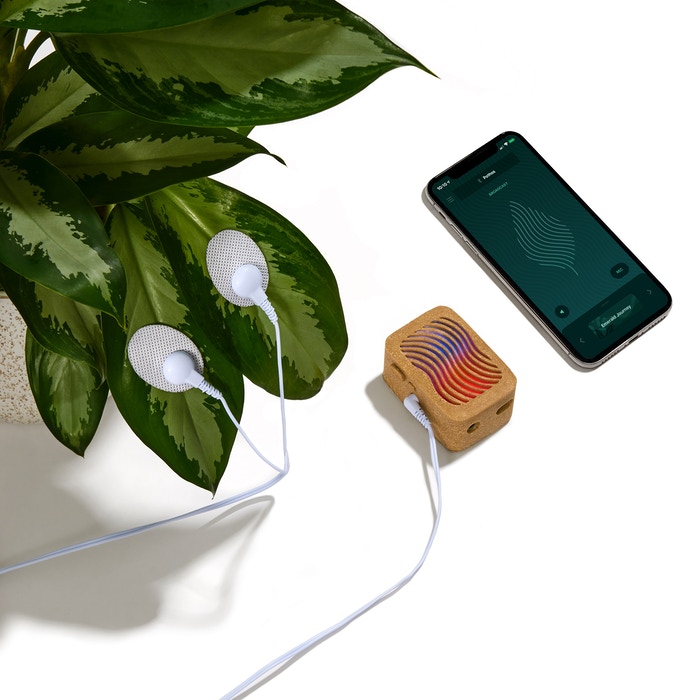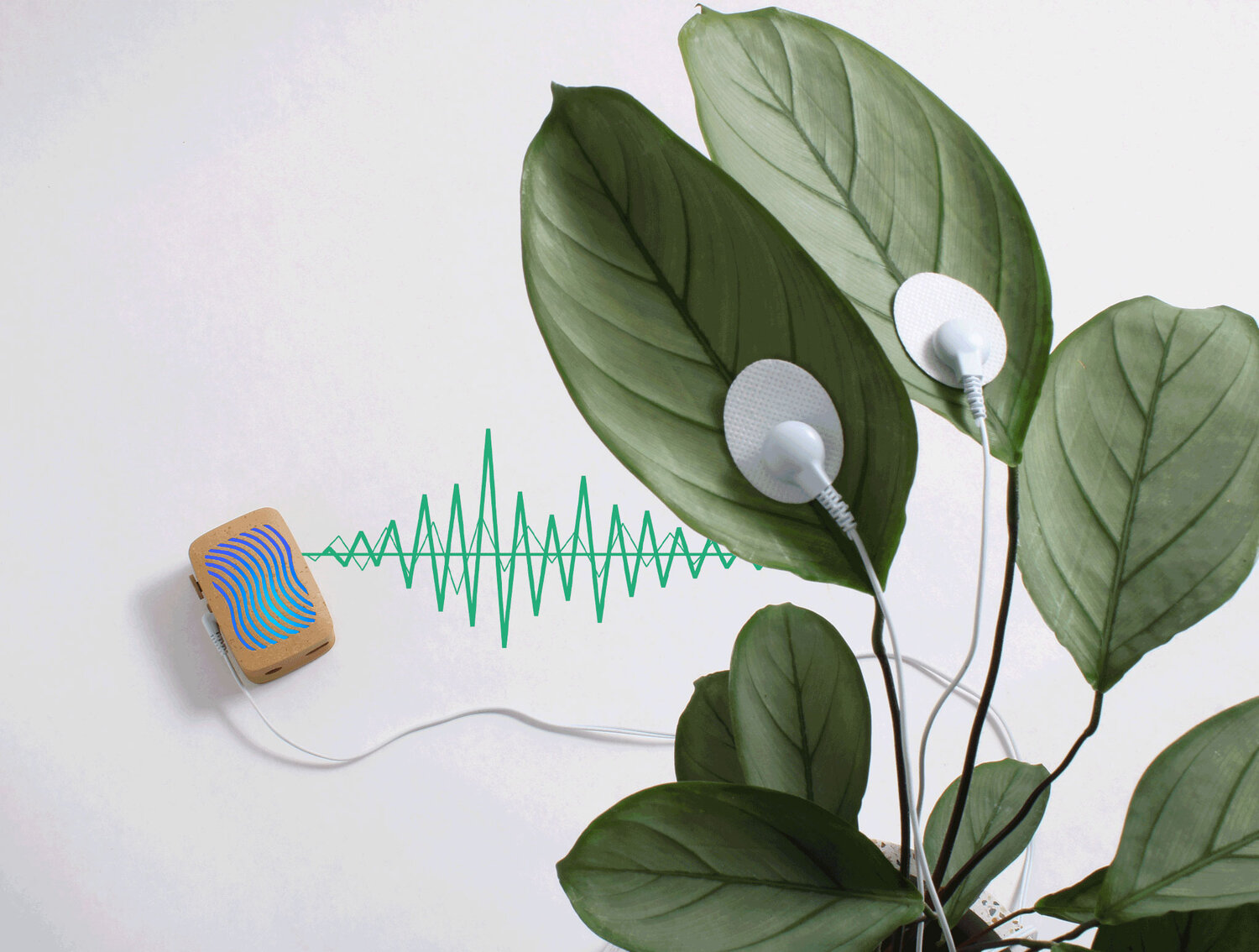IN 2012, THE artists Joe Patitucci and Alex Tyson set up a jungle’s worth of tropical plants in the Philadelphia Museum of Art and invited them to perform. People filed in to stand and listen as the Data Garden Quartet, a botanical orchestra, gave its debut performance. On lead synth, a philodendron. A schefflera played bass, while a second schefflera managed the rhythm tone generator. A snake plant controlled ambiance and effects.

Patitucci and Tyson had fitted each of the plants with a small device that translated biofeedback into sonic data. The device sat on a leaf, like a miniature stethoscope, and monitored the fluctuations of electrical conductivity on the leaf surface. That data fed into a program that turned those signals into controls for electronic instruments—as light graced a leaf, it might tilt the pitch, or change the rhythm. Data Garden Quartet performed four songs, all of them improvised. The music sounded like rolling waves—cool, ambient tones layered over electronic hums.

Three years later, Patitucci teamed up with the experimental musician Jon Shapiro to extend the technology behind the Data Garden Quartet. Together, they invented the MIDI Sprout, a “biodata sonification device” that includes a pair of probes to attach to a plant’s leaf. Among the small group of artists and musicians who began using it to control their electronic instruments, the MIDI Sprout was a hit.

The PlantWave, which launched on Kickstarter this week, works much like the earlier devices—except that it is designed specifically for home use. The sensors sit on a plant’s leaf and connect to a phone, tablet, or laptop using Bluetooth. Unlike the MIDI Sprout, there is no instrument cable necessary; Shapiro imagines people attaching it to their plants at home, or bringing it on a hike to listen to the plants they encounter out in nature. The idea is to bring botanical music to anyone with an interest in plants.

The PlantWave is designed to give everyday people access to some of that magic, even if its source is misunderstood. Affixed to the leaf of a golden pothos, it can make someone feel more connected to the living, photosynthesizing thing in their own home. “The plant can actually switch between different instruments and turn dials the way a performer would,” Shapiro says. That, he believes, can deepen the connection between person and plant.
The resulting compositions of PlantWave are beautiful and eerie. The soft electronic tones call to mind the first experiments in plant music from the 1970s when artists began projects like Mother Earth Plantasia, an album of “warm earth music for plants … and the people who love them.” But PlantWave isn’t making music for plants. It’s making music from plants, for people, in the hopes of fostering an appreciation that may one day help us understand more about the world around us.
According to Wired














